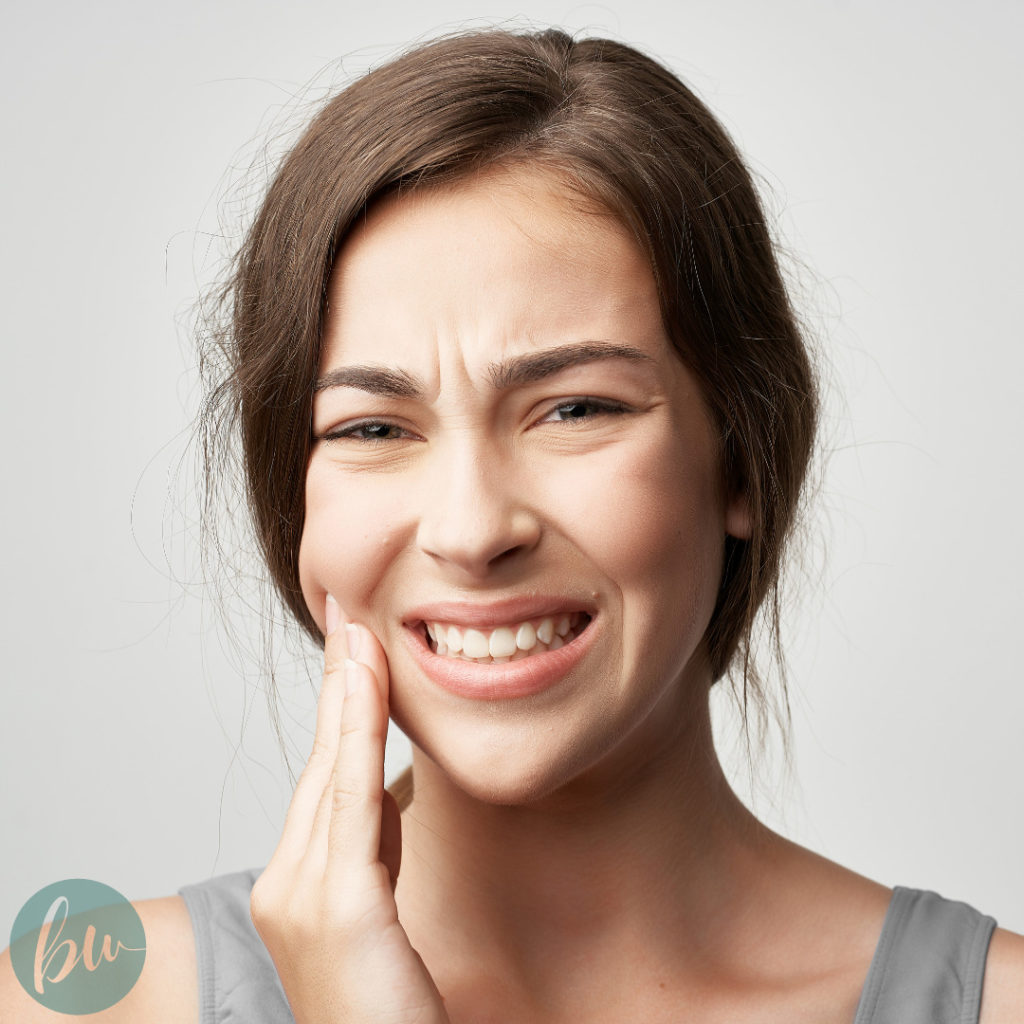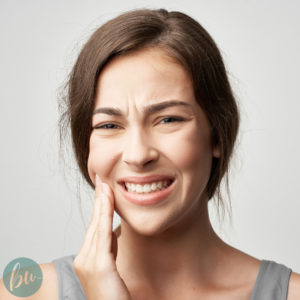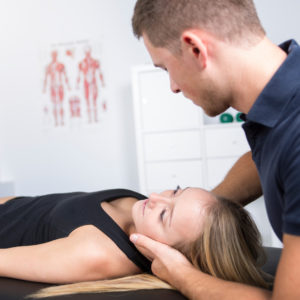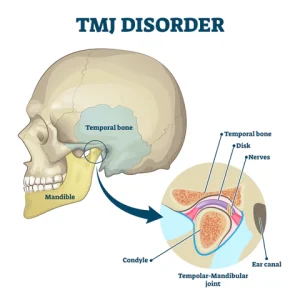Temporomandibular joint disorder (TMJ)- Be Well

Temporomandibular disorders (TMD) occur as a result of problems with the jaw, jaw joint, and surrounding facial muscles.
The Temporomandibular joint is a unique synovial joint that allows the jawbone to connect to the skull at the temporal bone. This joint forms via the articulation of the mandibular condyle and the temporal fossa. This articulation takes place within a fibrous capsule which allows a gliding and hinge joint to form.
The hinge joint allows us to open and close our mouths (depression and elevation of the jaw) and
the gliding joint allows for translation which allows the mouth to open wider. These actions are
controlled by different muscles and ligaments. The coordination of these muscles are extremely
important as they allow us to speak, eat and yawn.
Muscles of the jaw
The main muscles involved in eating are known as the muscles of mastication, these muscles need to
contract efficiently allowing for controlled movement within the joint capsule. If this does not occur,
it can result in different syndromes which are classified as temporomandibular disorders.
The main signs and symptoms of TMJ disorders include:
Pain in the joint itself
Pain into the ear
Pain into the face and neck
Clicking of the jaw with movements
Difficulty chewing
Pain resembling toothache

There are many contributing factors to TMJ disorders which include:
Musculoskeletal disorders and poor posture
Arthritis
Stress and anxiety
Teeth grinding and poor alignment of the teeth
Treatment of TMJ disorders
Treatment of TMJ disorders need to be personalized and will differ from one person to the next. The
main treatment option will be dependent on the cause of the pain. Physiotherapists mainly target
TMJ disorders that result from musculoskeletal issues, poor posture, stress and anxiety. A few
treatment techniques include:
Trigger point release
Soft tissue mobilization
Dry needling
Improving range of motion
Strengthening of muscles around the jaw and neck
Posture correction

A combination of the above treatment techniques is often used during physiotherapy sessions. By
doing this we aim to achieve pain relief in the short term and by addressing the main cause of the
disorder we reduce the likelihood of recurrence in the long term.
Contact us for further information or to book an appointment here.
– Nakita Gaia







